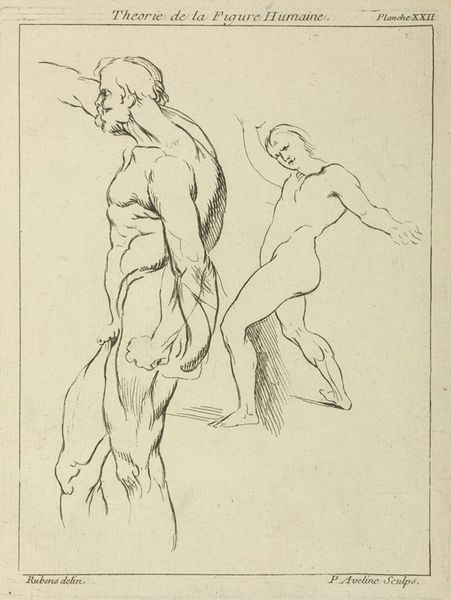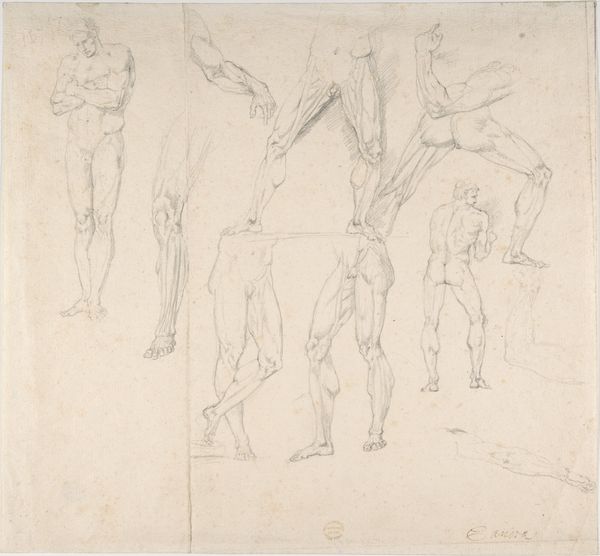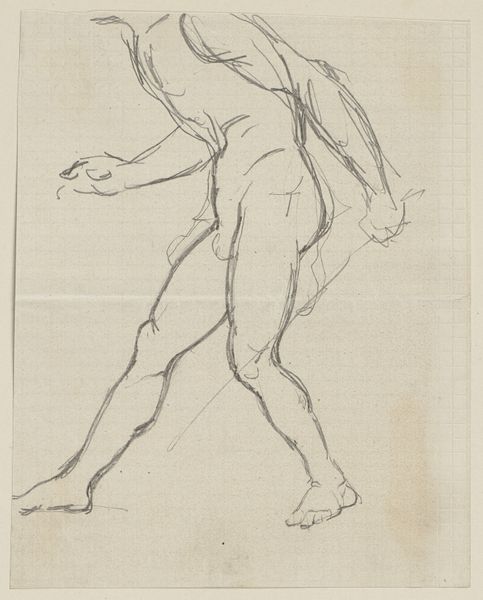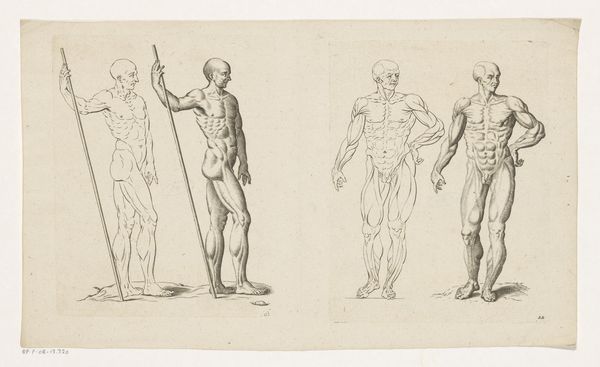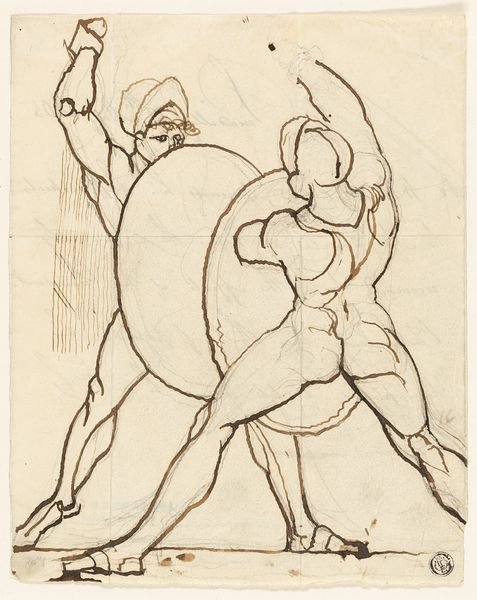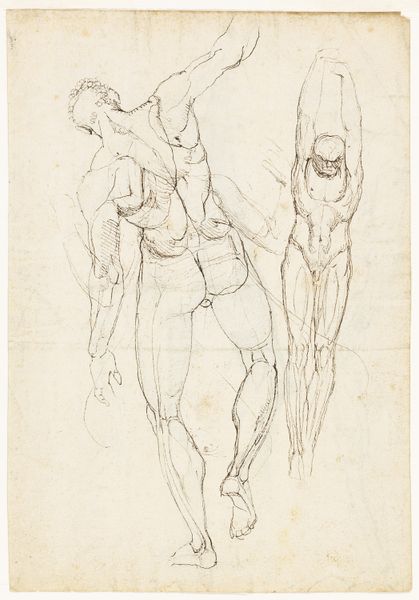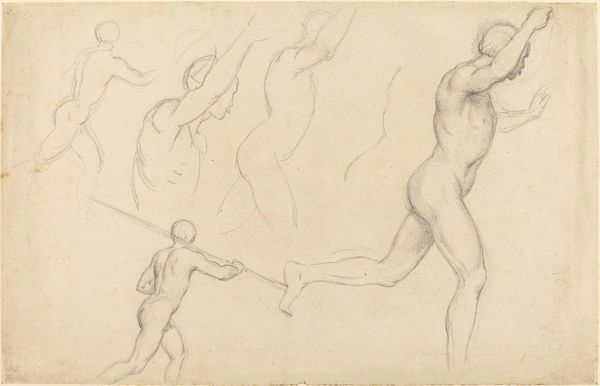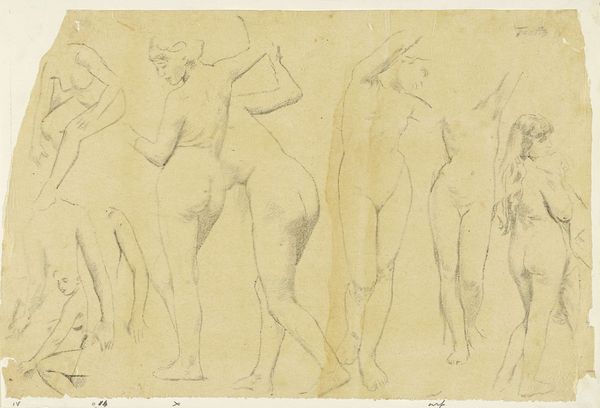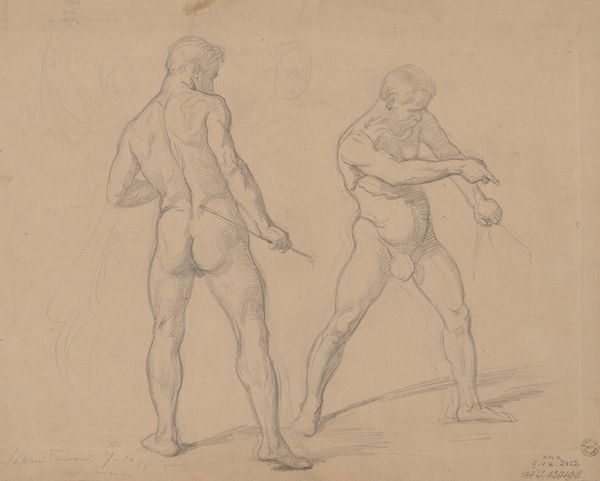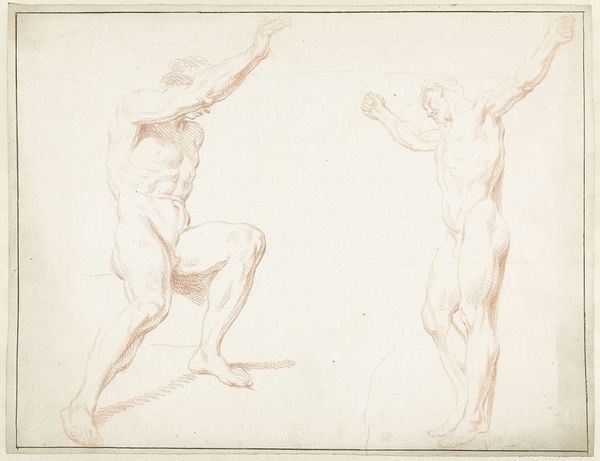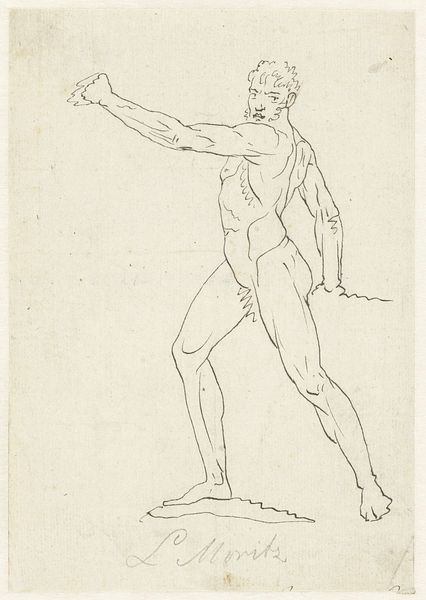
Dimensions: support: 224 x 323 mm
Copyright: CC-BY-NC-ND 4.0 DEED, Photo: Tate
Editor: This drawing, "Two Ecorchés," by John Hamilton Mortimer, shows figures stripped of skin, revealing their muscles. It’s quite striking! What do you see in it? Curator: It’s a window into the artistic process, isn't it? Notice how the artist meticulously renders the musculature. It highlights the labor involved in anatomical study and the material understanding required for such a depiction. Editor: So, it’s not just about the finished product but the process of creating it? Curator: Precisely! And consider the social context: the accessibility of anatomical knowledge, the role of art academies, and the demand for such studies. It reflects a society valuing scientific inquiry and artistic skill, showcasing the relationship between them. Editor: I never thought about it that way. Thanks for pointing that out! Curator: My pleasure! There is always more to discover when we look at the means and context of production.
Comments
Join the conversation
Join millions of artists and users on Artera today and experience the ultimate creative platform.
tate 8 months ago
⋮
An ‘écorché’ is a model of a human figure which has been flayed to expose the structure beneath the skin. Academy students were encouraged to make drawings such as these in order to improve their understanding of human anatomy. The Academy owned a collection of casts of flayed figures, which was put together by its first Professor of Anatomy, Dr William Hunter. One of the casts Hunter produced to illustrate his lectures at the Academy was taken from the flayed body of a criminal brought fresh from the gallows at Tyburn. Gallery label, September 2004
